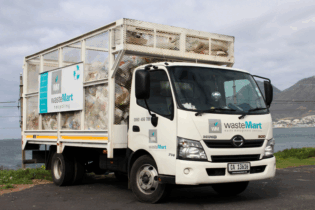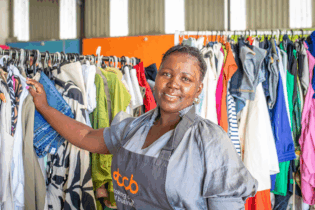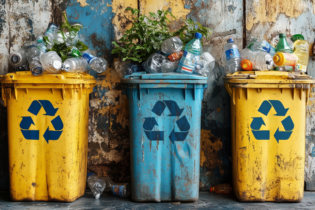The Kraaifontein Integrated Waste Management Facility has not only been very well received by community members, but also continues to be praised for its design and functioning, councillor Ernest Sonnenberg, Cape Town mayoral committee member for Utility Services, tells Chantelle van Schalkwyk.
In 2011, the City of Cape Town opened its Kraaifontein Integrated Waste Management Facility (KIWMF), which was designed to ease the waste load in the area, with the need for it being identified as far back as 2004. The facility has been hailed as the first integrated waste management facility of its kind in South Africa. “As an integrated facility, it comprises a transfer station, drop-off facility, container handling areas for full and empty containers, a chipping area for the processing of greens waste, hazardous materials holding area for small quantities received at the drop-off, and oil holding container for all waste ,” explains Sonnenberg. There is also a compaction hall for compacting waste into containers and a dual weighbridge system with two incoming and two outgoing weighbridges. “This integrated approach, having all activities of waste-handling on-site, is what makes the facility unique. Nearly half the waste that comes onto site is sorted and sold off to recyclers.” However, while the opportunities for recycling are limitless, one of the questions that needs asking is if there is a local market for the facility to supply with the recycled materials. “There is a market for the recyclable waste but some materials are exported due to the limited off take and price,” explains Sonnenberg. The facility is also an educational tool in the fight against an increasing waste stream, according to Sonnenberg. “The community has access to a one-stop drop-off operation where the manner in which waste is handled and sorted is clearly visible to anyone who visits it. Finally, the KIWMF offers great facilities for its employees, as well as excellent facilities for conferencing and educating the public.” Teething problems Despite its high profile, the facility was not without what Sonnenberg terms “teething problems.”“A number of teething problems were experienced, which have now largely been addressed. The plant installed for compaction of the waste proved to be problematic and many of the components had to be upgraded to address design flaws in the initial stages,” explains Sonnenberg. He adds that another challenge was that detailed specifications of the plant were not readily available in order to conduct maintenance fast enough and certain electrical items were long-lead items, causing excessive downtime. “Spares for the plant were not bought at the start-up stage. Containers placed excessive wear on lifting pins, and wheels on certain containers failed after a few months of use and had to be changed,” says Sonnenberg.A further challenge highlighted by the councillor was the under-resourcing of plant maintenance personnel for a plant of this size.
However, most of these challenges have been successfully overcome through the upgrading of the plant design. “Container-lifting pins and wheels have been upgraded, some spare components have been procured for breakdowns, and a fully kitted workshop has been installed. In addition to this, more personnel have been employed to deal with plant maintenance on-site.” In fact, according to Sonnenberg, approximately 160 jobs have been created via the facility. “There are, however, a number of community members who believe that more jobs could have been created. Unemployment remains a problem and unfortunately the development of a facility such as this runs the risk of raising unrealistic expectations.” Sustainable stream As such, the facility currently receives 350 to 500 t of general waste per day, 80 t drop-off waste (this includes garage waste and rubble), 100 t green waste, and 70 t recyclable waste from a variety of local areas, which include most frequently, according to Sonnenberg, Kraaifontein, Brackenfell, Kuilsriver, Fisantekraal, Eersterivier, Westbank, Belhar, Kalkfontein, Milnerton, Du Noon, Parow and Joostenberg Vlakte. Keeping sustainability as his focus for the facility, Sonnenberg adds that pollution prevention was incorporated into the design of the plant. “All plant areas are linked to the sewer system in case of leachate run-off, and the site is adequately fenced off for prevention of wind-blown litter. Internal bioswale is also fenced off to prevent litter going into the swale. Oil areas with potential for oil run-off have oil separator traps installed, which are pumped out regularly. All fuel holding areas are adequately bunded and drainage to oil separating traps as well. We have a housekeeping schedule for litter picking. Finally, a mechanical sweeper also frequents the facility and road outside the site.” This focus on sustainable design is also what has ensured that the facility be well received by the local communities and well utilised. “It’s been very well received, and has been praised for its design and functioning. The community are happy with the facility and its location. One needs only to look at the numbers – with an average of 200 vehicles visiting the site every day – to see that many people have come to rely on it,” concludes Sonnenberg.






